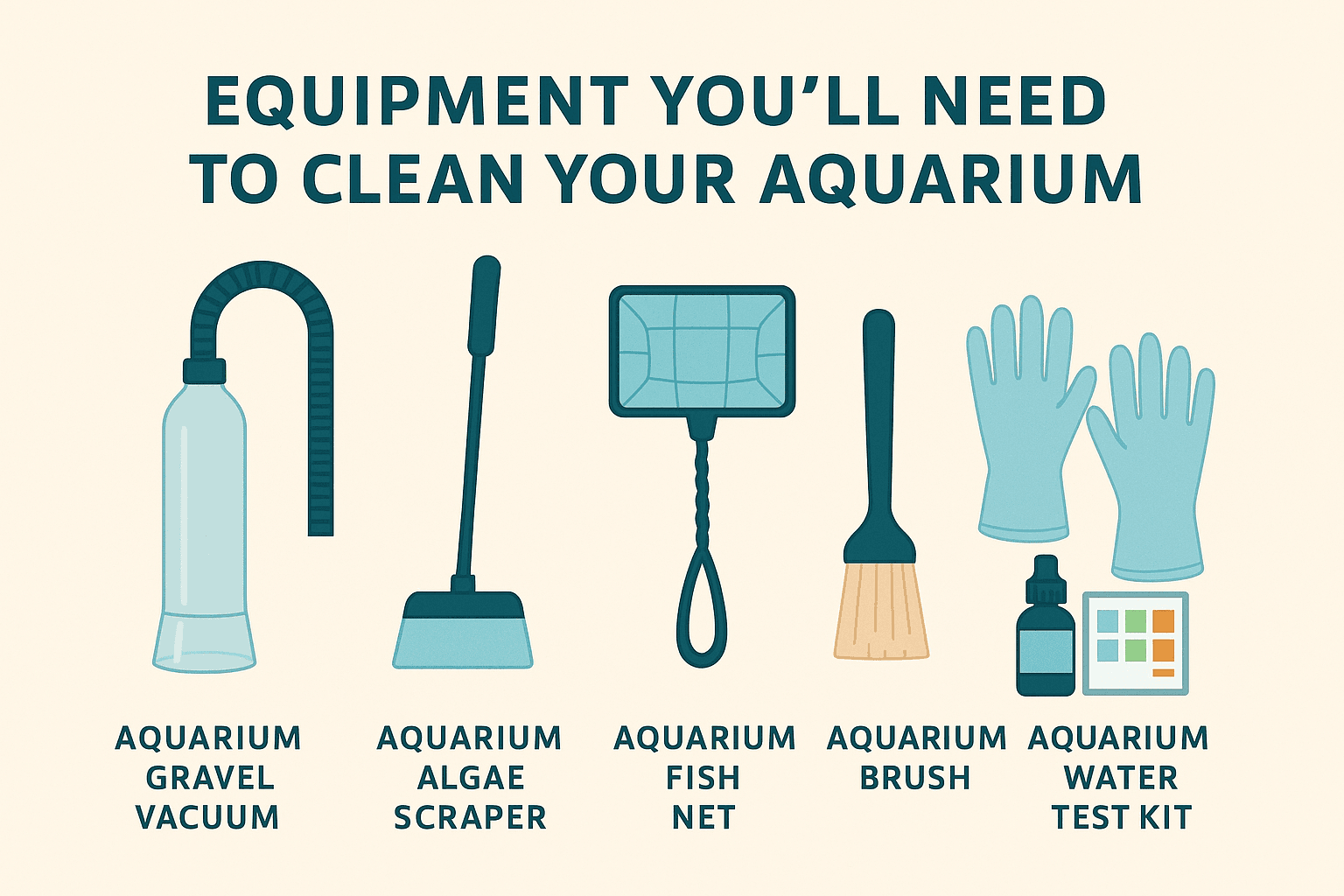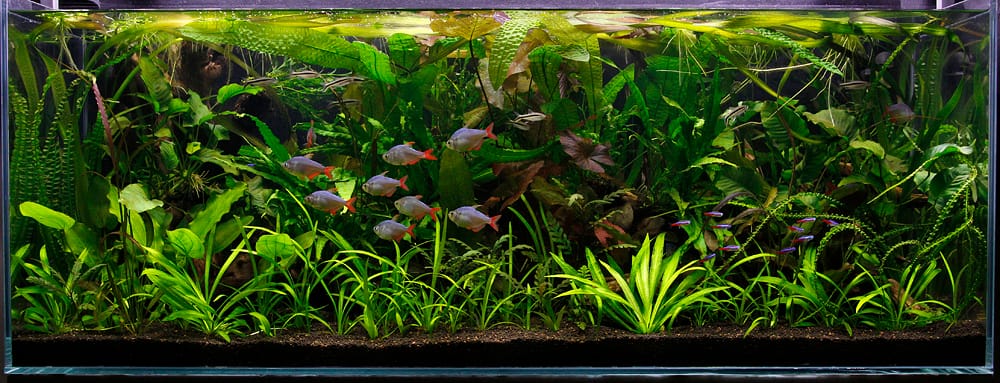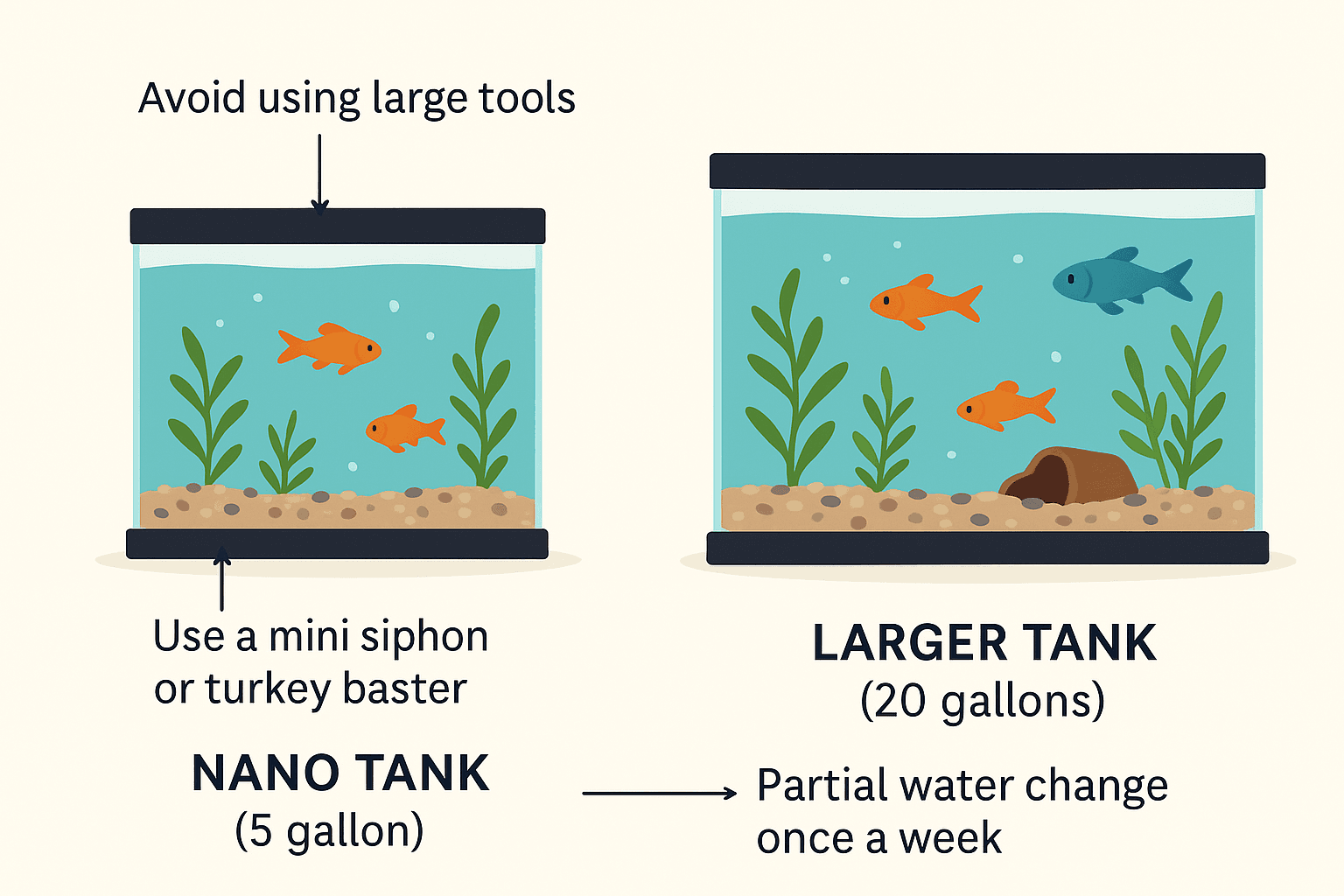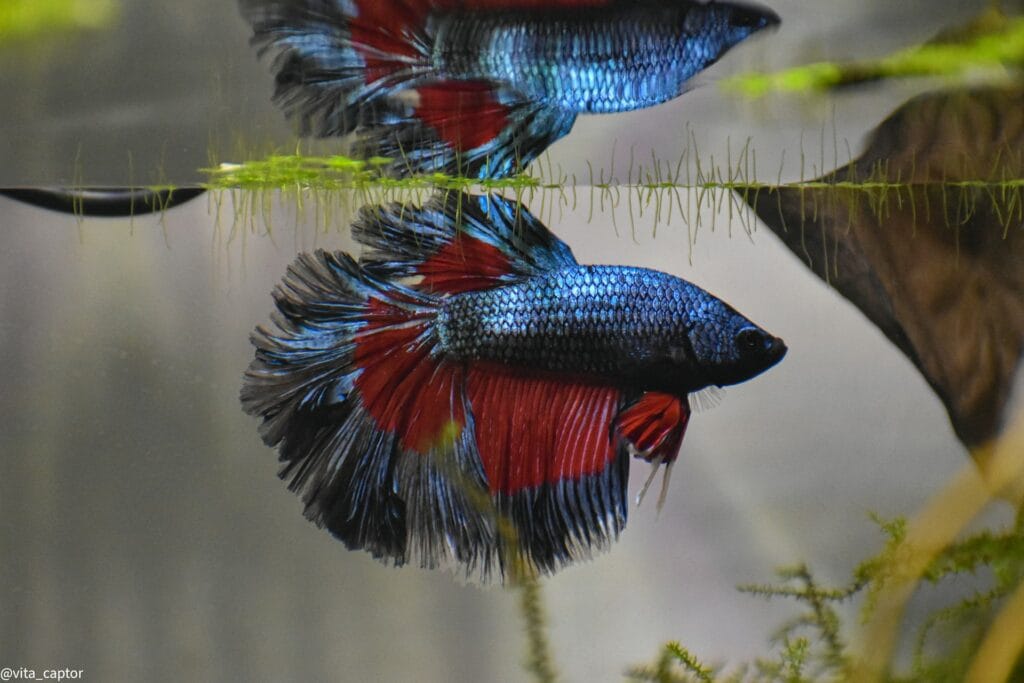How to Clean a Fish Tank: The Ultimate Aquarium Maintenance Guide
Keeping your fish tank clean isn’t just about making it look pretty — it’s essential for your fish’s health and happiness. A dirty aquarium can quickly lead to ammonia spikes, algae outbreaks, and stressed-out fish. Whether you’re a complete beginner or looking to upgrade your maintenance routine, this step-by-step guide will walk you through everything you need to know about how to clean a fish tank the right way.
Why Cleaning Your Aquarium Is Important
Your fish tank is more than just a decorative centrepiece in your home — it’s an enclosed ecosystem. In a closed system like an aquarium, all waste products, whether they come from fish, uneaten food, or decaying plant matter, remain in the tank unless actively removed. These materials decompose and release harmful substances like ammonia, nitrites, and nitrates. In excess, these chemicals are toxic to fish and can disrupt the balance of your aquarium, potentially leading to fish illness or even death. Regular cleaning is essential to prevent these harmful buildups and maintain a safe environment for your aquatic friends.
Still planning your tank setup? This guide to choosing the right freshwater fish will help you stock wisely from the start.
A clean tank ensures the health of your fish, plants, and beneficial bacteria. Ammonia and nitrite spikes are two of the most common causes of aquarium problems, and they can be easily managed with regular cleaning and water changes. A well-maintained tank also helps reduce the chances of unsightly algae blooms, which can quickly take over your tank, blocking light and depleting oxygen levels in the water. This will not only affect the aesthetics of your aquarium but also the well-being of its inhabitants.
Beyond the biological benefits, a clean tank is much more visually appealing. Crystal-clear water, lush plants, and active fish contribute to an overall serene and healthy environment. Consistent maintenance also extends the life of your aquarium’s equipment. For example, filters that are kept clean will run more efficiently, preventing them from clogging and becoming overworked, which could lead to expensive repairs or replacements down the line.
How Often Should You Clean a Fish Tank?
The frequency with which you clean your fish tank depends on several factors, including the size of your tank, the type of fish and plants you have, and the overall setup. For example, a large tank with few fish and plenty of plants may only require light cleaning every few weeks. However, smaller, heavily stocked tanks might need more frequent attention to keep everything running smoothly.
General Cleaning Schedule
A consistent cleaning schedule is key to maintaining a healthy aquarium environment. The following table outlines a general cleaning schedule based on standard aquarium care. Of course, you should adjust the frequency depending on your specific tank’s needs.
Aquarium Cleaning Schedule
| Task | Week 1 | Week 2 | Week 3 | Week 4 | 1–2 Months |
| 🧪 Check water parameters | ✔️ | ✔️ | ✔️ | ✔️ | |
| 🧼 Wipe glass | ✔️ | ✔️ | ✔️ | ✔️ | |
| 🐟 Remove debris | ✔️ | ✔️ | ✔️ | ✔️ | |
| 💧 Water change (10–25%) | ✔️ | ✔️ | |||
| 🧽 Gravel vacuum | ✔️ | ✔️ | |||
| 🌀 Rinse filter media | ✔️ | ||||
| 🪷 Deep clean decor | ✔️ |
Monitoring your tank regularly allows you to catch potential problems early. For instance, if your water starts to look cloudy or if you begin to notice a fish behaving abnormally, it’s a sign that cleaning may be needed sooner than your regular schedule suggests.
Signs that your tank may need cleaning sooner:
- Cloudy or smelly water: This usually indicates poor water quality, often due to high levels of ammonia or nitrates.
- Visible algae growth: Algae will quickly spread on tank surfaces, including glass, rocks, and decorations.
- Sluggish or stressed fish: Fish that are lethargic or showing signs of stress may be reacting to poor water quality.
Maintaining a routine will help prevent these issues before they start, ensuring that your fish and plants thrive in a balanced, clean environment.
Equipment You’ll Need to Clean Your Aquarium
Cleaning your fish tank efficiently requires the right tools. Having everything on hand will make the process smoother and help you avoid using anything harmful to your tank’s inhabitants. Below is a checklist of essential cleaning equipment to maintain your aquarium.
Essential Cleaning Tools
- Siphon or Gravel Vacuum
A siphon or gravel vacuum is essential for removing fish waste, uneaten food, and debris that accumulates in the substrate. It helps prevent organic matter from decaying, which can lead to water quality issues. - Buckets (Marked for Aquarium Use Only)
It’s important to have dedicated buckets for aquarium cleaning, as these should never be used for cleaning with chemicals. Label them to avoid cross-contamination with household cleaning products. - Algae Scraper or Magnetic Cleaner
Algae will inevitably grow on the glass or decorations in your tank. Using an algae scraper or a magnetic cleaner will make the task of removing algae easier without scratching your glass. - Filter Brush or Old Toothbrush
These small brushes are ideal for cleaning filter components and hard-to-reach spots in your tank, such as between rocks or behind decorations. - Aquarium-Safe Glass Cleaner (Optional)
For cleaning the outside of the tank, an aquarium-safe glass cleaner can help remove water spots or smudges without harming your fish. Always choose a non-toxic product specifically designed for aquarium use. - Aquarium Gloves
Using gloves helps protect your hands from any potential contaminants in the tank and also helps maintain hygiene during the cleaning process. - Dechlorinator (If Using Tap Water)
When adding fresh water to your aquarium, dechlorinator is essential if you’re using tap water. Chlorine and chloramine in tap water can be harmful to your fish and beneficial bacteria.

Optional But Helpful Tools
- Powerhead: If you have a large tank, a powerhead can help stir up debris, making it easier to remove.
- Water Test Kit: Regular testing of water parameters can help you maintain healthy water conditions and guide when to clean.
- Turkey Baster: For small tanks, a turkey baster is useful for spot cleaning hard-to-reach areas or removing debris from decorations.
Step-by-Step: How to Clean a Fish Tank
Cleaning your aquarium is a straightforward process if you follow the right steps. Here’s a step-by-step guide to ensure you clean your tank effectively without disturbing your fish or the beneficial bacteria in the tank.
1. Unplug Equipment
Before starting, always unplug your heater, filter, and lights to avoid any electrical hazards while working in the tank. Unplugging ensures you can clean the aquarium without any risk of equipment malfunction.
2. Remove Algae
Next, take an algae scraper or sponge to gently scrub the inside of the tank’s glass. Algae buildup is a common issue, and removing it regularly will keep the tank looking fresh and prevent it from obstructing your view.
3. Vacuum the Substrate
Using a gravel vacuum, gently suck up waste, uneaten food, and debris from the substrate (gravel or sand). Be thorough but gentle to avoid disturbing the beneficial bacteria that live in the substrate, which helps maintain healthy water conditions.
4. Prune Plants and Remove Debris
If you have live plants, use a net or tweezers to prune any dead or decaying leaves. Removing floating debris or plant clippings is also essential for maintaining water quality.
5. Perform a Water Change
After removing debris and cleaning the tank, it’s time to perform a water change. Remove about 10-25% of the water and replace it with dechlorinated water at the correct temperature. Be sure not to change too much water at once, as this can disrupt your tank’s ecosystem.
6. Rinse Filter Media (In Tank Water)
Never rinse your filter media with tap water, as it can harm the beneficial bacteria that help filter your tank. Instead, rinse it gently in a bucket of old tank water to maintain the bacterial colonies.
7. Wipe the Outside
Finally, wipe down the outside glass of the tank with a microfiber cloth and an aquarium-safe cleaner. Don’t forget to clean the light fixtures and tank lid, as well.
Deep Cleaning: When and How
While regular maintenance keeps your fish tank in good shape, sometimes it’s necessary to perform a deep clean. This is typically required if your tank has become heavily soiled, overrun with algae, or if you’ve had any tank issues, such as illness. Deep cleaning goes beyond the usual tasks and involves thoroughly scrubbing and disinfecting various tank elements. Here’s when and how to deep clean your aquarium.
When to Deep Clean
Signs you need to deep clean include:
- Excessive algae growth: If algae has taken over your aquarium decorations or tank surfaces, it’s time for a more thorough cleaning.
- Neglected tank: If you haven’t cleaned your tank in a while, a deep clean may be needed to restore the water’s clarity and quality.
- Illness in the tank: If one or more fish are sick, it may be a good idea to disinfect the tank to prevent spreading disease.
How to Deep Clean
Here are the steps for a deep clean:
- Remove decorations: Take out decorations, plants, and rocks. Scrub them gently with tank water (never tap water) to remove algae, dirt, or any debris.
- Soak items in bleach solution: For stubborn algae or dirt, soak decorations in a mild bleach solution (1 part bleach to 20 parts water). After soaking, rinse thoroughly with tank water and use a dechlorinator to remove any remaining bleach.
- Clean the filter impeller and tubing: If you notice your filter isn’t working well, clean the impeller and tubing to remove any buildup of dirt or algae. This ensures that your filter works effectively after the cleaning.
- Scrub the tank walls: If the inside of your tank has significant algae buildup, scrub the walls carefully to remove the grime.
Important Note: Don’t perform a deep clean and a large water change at the same time, especially in established tanks. Doing so can disrupt the delicate balance of beneficial bacteria, which can harm the tank’s ecosystem.
Special Notes for Different Tank Types
Different types of aquariums require unique care routines due to their specific needs. Here’s a breakdown of what to consider when cleaning different tank setups.
Planted Tanks
If you have a planted aquarium, cleaning becomes more delicate. Plants, especially rooted ones, rely on the substrate for nutrients, and disturbing this too much can uproot them or release excess nutrients that can cause algae problems. Focus on cleaning the glass, removing floating debris, and gently vacuuming the substrate. Be careful around the roots of plants to avoid disrupting the ecosystem. If you’re pruning plants, only trim the dead or overgrown leaves to avoid damaging the plant’s overall health.
If you keep shrimp in your planted tank, you’ll want to be extra gentle — see our freshwater shrimp care guide for tips on maintaining a healthy shrimp habitat.

Nano Tanks
Nano tanks (smaller aquariums, typically under 20 gallons) are more sensitive to changes in water quality and temperature. These small environments can get dirty more quickly, so you may need to clean more often. However, since these tanks are smaller, avoid using large tools for cleaning, as they can stir up debris and stress the fish. Use a mini siphon or turkey baster for more precise cleaning, and be gentle when cleaning the substrate and decorations. A small tank may require a partial water change once a week to maintain good water quality.

Betta Tanks
Betta tanks often don’t have filtration or a heater, making them more prone to issues like water stagnation and algae growth. Because Betta fish are sensitive to water conditions, it’s important to clean their tank regularly but gently. Use a soft sponge or algae scraper to clean the glass. Avoid doing a 100% water change unless absolutely necessary, as this can cause stress for the fish. Betta tanks typically require weekly water changes of about 25%, as well as cleaning the filter (if present) and scrubbing any decorations with tank water.

Common Mistakes to Avoid
Cleaning your fish tank seems straightforward, but there are several common mistakes that even experienced aquarists can make. Avoiding these errors will help maintain a healthy tank and ensure your fish thrive.
1. Rinsing Filter Media Under Tap Water
One of the biggest mistakes beginners make is rinsing filter media (sponges, pads, etc.) under tap water. Tap water contains chlorine and chloramine, which can kill the beneficial bacteria living in the filter. These bacteria are essential for breaking down waste in the tank. Always rinse filter media in old tank water to preserve these important microorganisms.
2. Cleaning Everything at Once
It can be tempting to give your tank a full cleaning, including the substrate, decorations, and filter, all at once, but this can cause problems. Doing so can disrupt the beneficial bacteria colonies and the nitrogen cycle, leading to a tank crash and potentially harming your fish. Clean in stages, and never remove all of the debris at once.
3. Over-Cleaning Substrate or Decor
Over-vacuuming the substrate or scrubbing decorations too hard can strip your tank of essential nutrients and disrupt the biological balance. The substrate is home to beneficial bacteria that break down waste, and too much cleaning can remove these colonies. Gently vacuum the substrate, and avoid over-scrubbing decorations.
4. Using Soap or Household Cleaners
Many household cleaners contain chemicals that are toxic to fish, even in small amounts. Always use aquarium-safe products and never use soap, bleach, or other harsh cleaners in your tank. If you need to clean the tank’s equipment, stick to warm water and specialised aquarium cleaners.
5. Neglecting to Unplug Equipment
Before you start cleaning, always remember to unplug the heater, filter, and lights to prevent electrical hazards. Leaving equipment plugged in while cleaning can result in equipment malfunction or electrical shock. It’s always safer to unplug first and avoid potential risks.
Final Thoughts
Cleaning your fish tank might seem like a chore, but with a consistent routine, it becomes second nature — and the rewards are well worth the effort. A clean tank not only improves the appearance of your aquarium but also promotes the health and well-being of your fish, plants, and other aquatic life.
By sticking to a regular cleaning schedule, avoiding common mistakes, and using the right tools, you can maintain a healthy, thriving aquarium. Regular maintenance prevents ammonia spikes, keeps algae at bay, and supports a stable environment for your fish. Plus, a well-maintained aquarium is more enjoyable for both you and your aquatic pets.
In conclusion, fish tank cleaning doesn’t have to be overwhelming. With the right approach and knowledge, you’ll create a safe, healthy home for your fish that will thrive for years to come. Happy cleaning!



